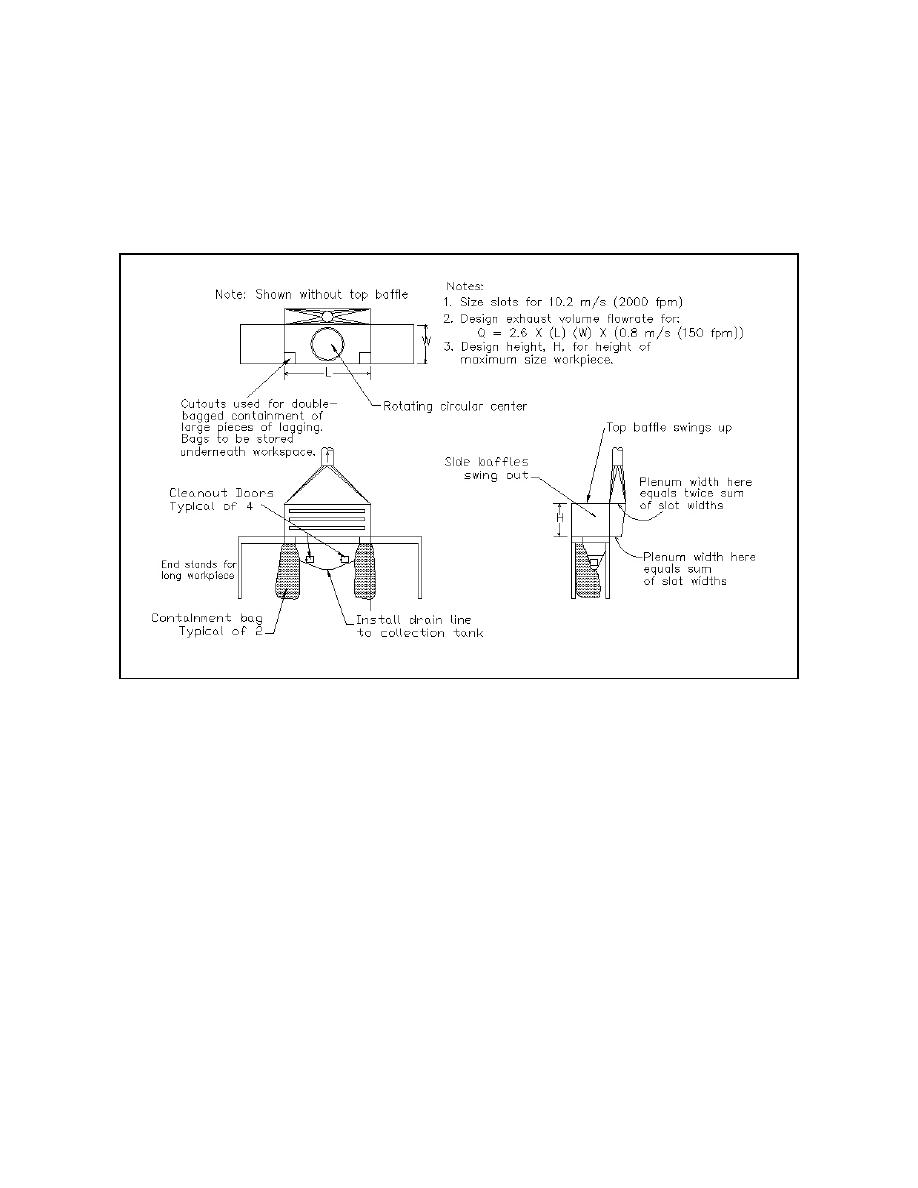
UFC 3-410-04N
25 October 2004
corners of the workbench to place large pieces of lagging in double
bagged containment.
b.
The top baffle swings up to allow access to overhead cranes.
Figure 3-2. Exhaust hood for high profile work pieces.
3-5.1.2
Typical Hood Design for Low Profile Work pieces. Figure 3-3 shows a
hood design consisting of a workbench with a grating strong enough to support the
heaviest expected work piece. This is a downdraft hood that draws small pieces of
lagging through the grating. The perforated plate below the grating creates even airflow
over the grating. This design is best for low profile work pieces such as piping. Design
each hood with stands and swinging baffles on each end to accommodate long work
pieces (e.g., pipes).
3-5.3
velocity of 25.4 m/s (5,000 fpm). The high velocity is necessary because the practice of
wetting the fibers makes them heavier and more difficult to transport. See paragraph 2-
4.1 for general duct considerations.
3-3



 Previous Page
Previous Page
